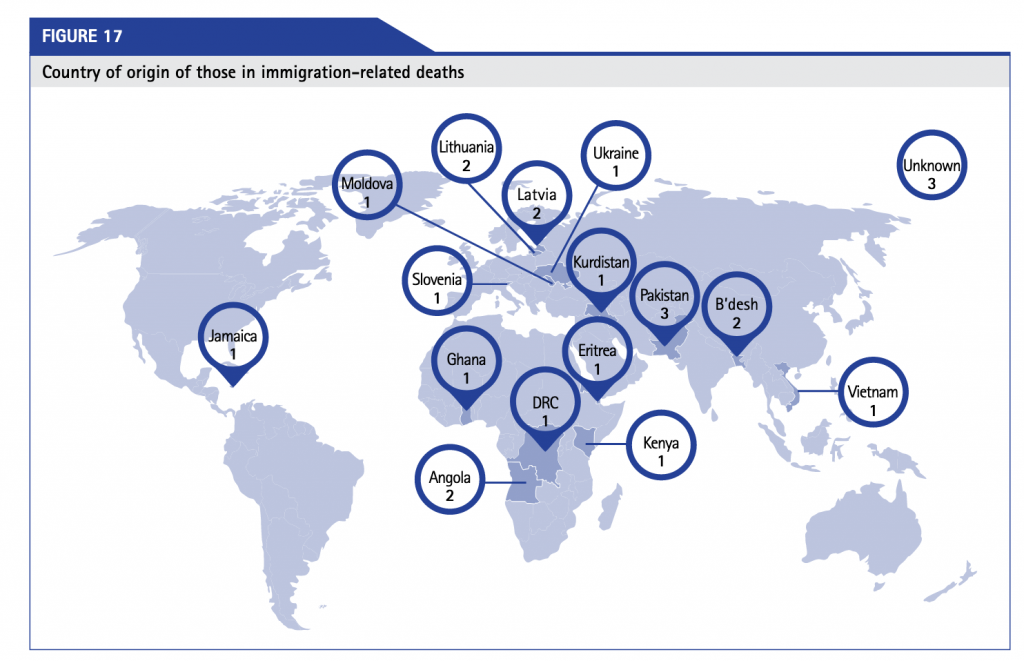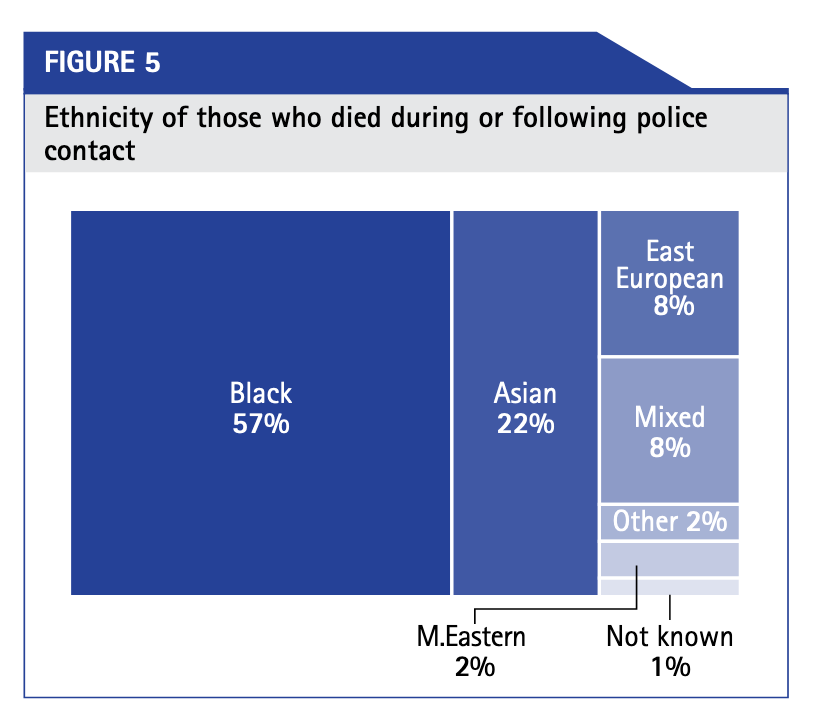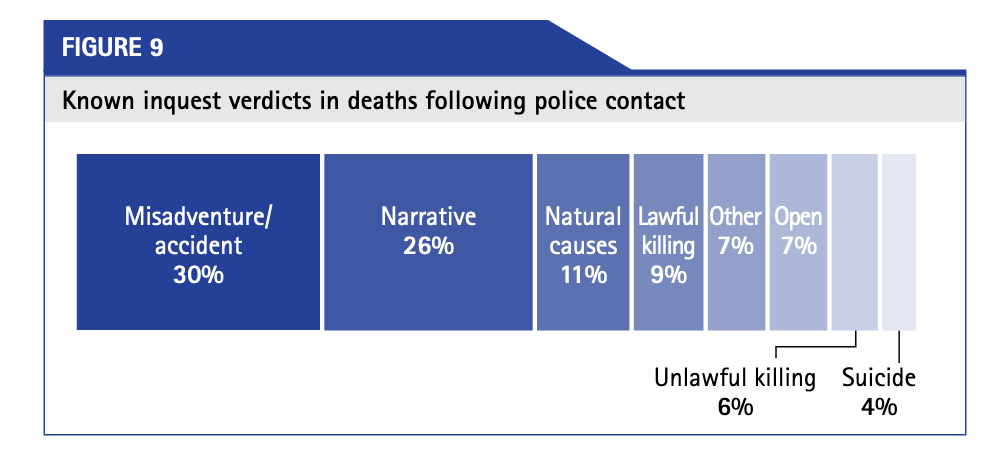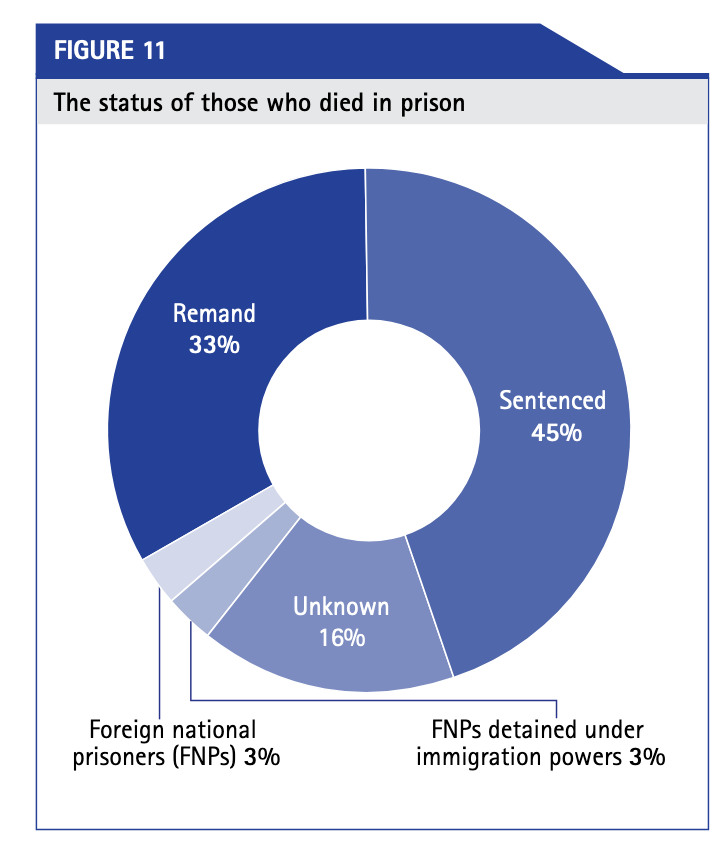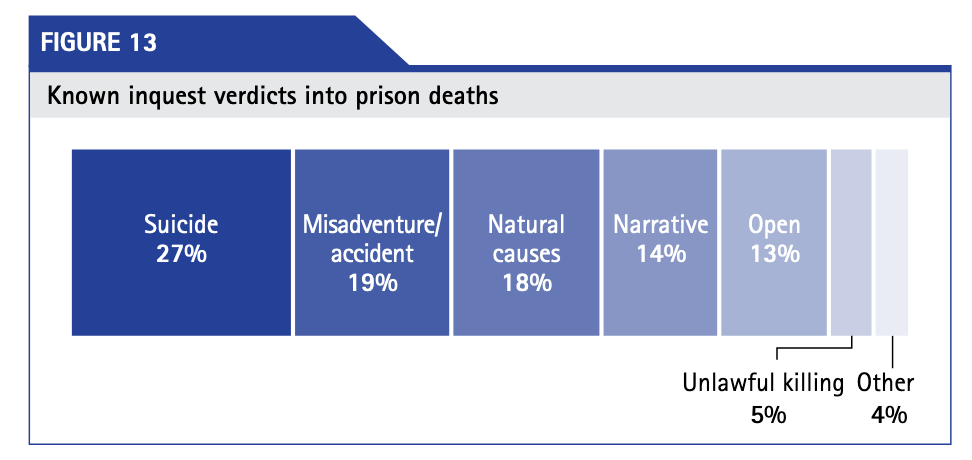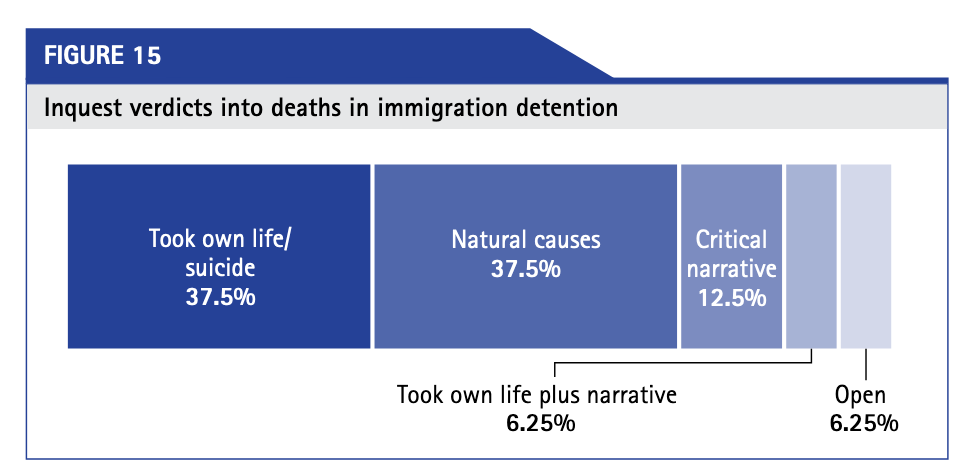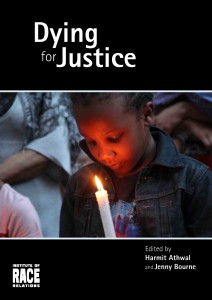 Below we reproduce statistics from our 2014 report Dying for Justice on BME deaths in custody. The full report can be download here
Below we reproduce statistics from our 2014 report Dying for Justice on BME deaths in custody. The full report can be download here
List of deaths in custody 1991-1999 List of deaths in custody 2000 - 2014
For analysis of BME Deaths in Custody from 2014 – 2021 head here>
Overview
This report features the cases of 509 people from BME, asylum seeker and migrant communities who have died in custody, in suspicious circumstances, between 1991 and September 2014. On average, this is about 21 deaths per year. The majority of the deaths documented – 348 (68 per cent of the total) – took place in prison; 137 cases (27 per cent) were in police custody and 24 cases (5 per cent) were in the immigration detention estate (including immigration removal centres and short-term holding facilities). As Figure 1 shows, in 2007, there were 49 suspicious deaths – the highest number recorded.
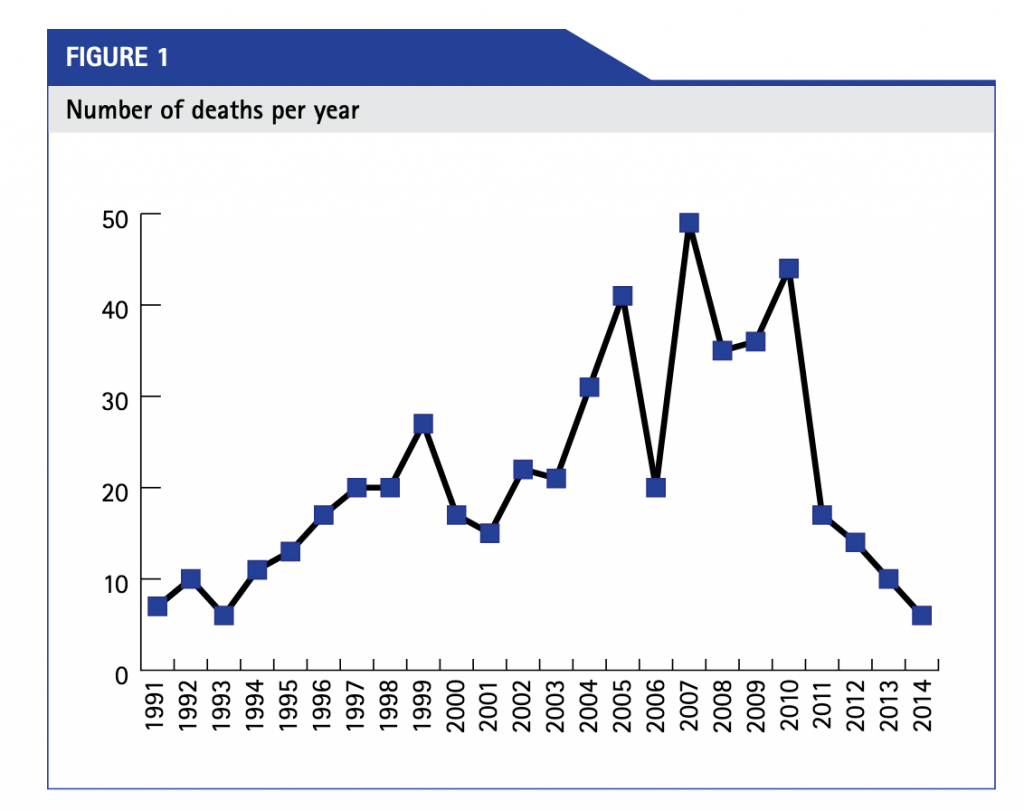
Profile
Of the cases that we have monitored, 478 (94 per cent of the total) people were male, and 31 (6 per cent) people female. Just over half of the people whose cases are featured were black or black British. (See Figure 2)
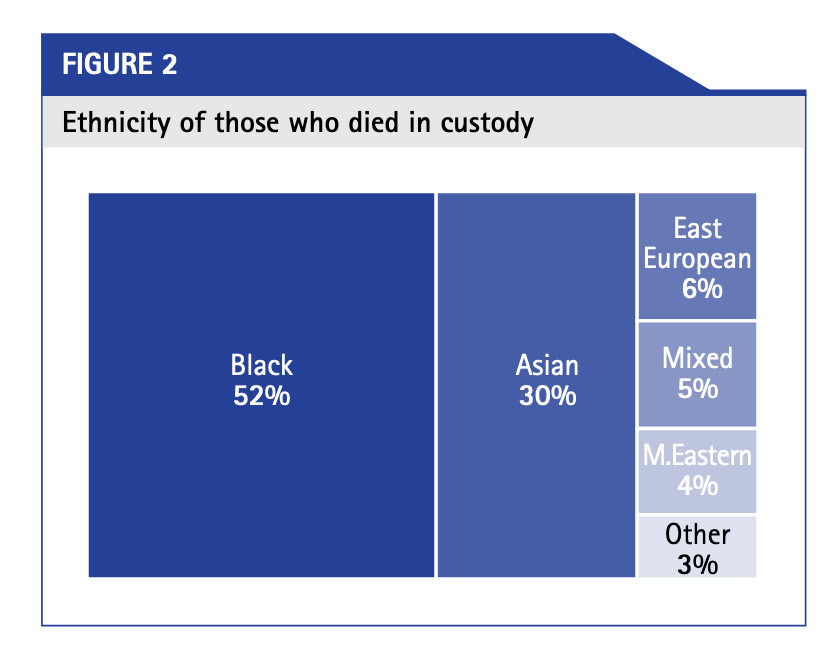
Contributory factors
One-in-three of the total deaths (169, or 32 per cent) we documented were apparent suicides, or as a result of self- harm. (See Figure 3) In 64 of the total cases (13 per cent) the person who died had known mental health problems. Medical neglect was a contributory factor in 49 of the total number of cases (10 per cent) and in 48 of the cases (9 per cent) the use of force appears to have contributed to the person’s death.
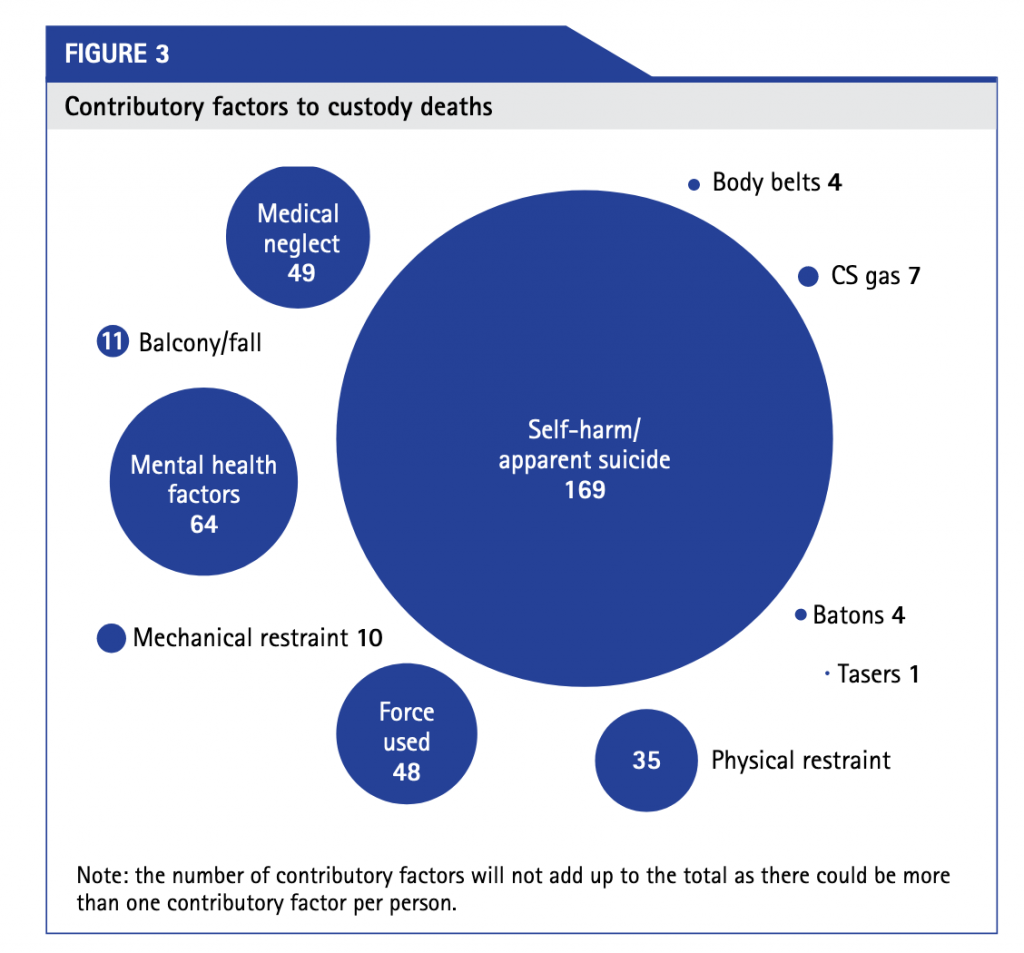
Inquest verdicts
As shown in Figure 4, ten of the deaths we documented (5 per cent) were followed by an unlawful killing verdict as a result of an inquest. Two of these verdicts were overturned on appeal. In the majority of the cases (60 per cent) featured, the inquest verdict is unknown to us. (There is no register of all inquest verdicts available to the public.)
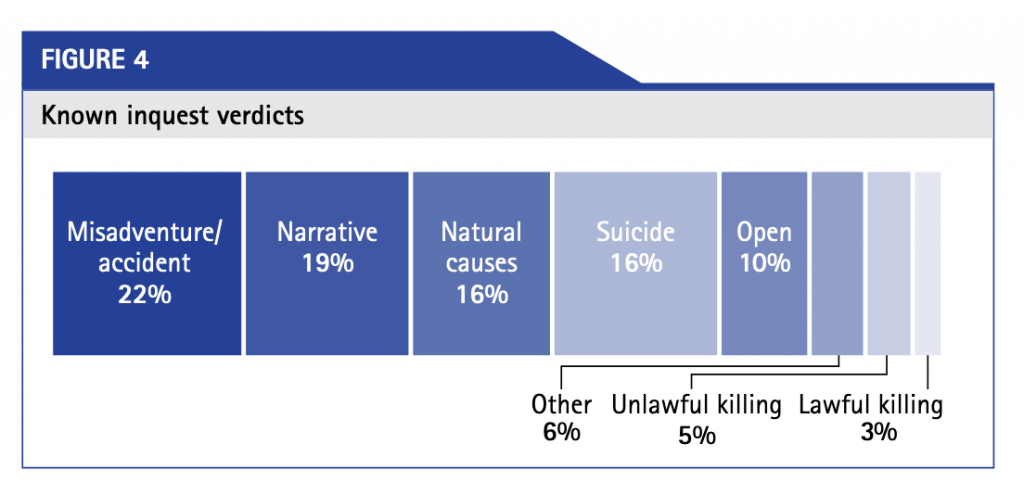
Police deaths
Overview
Of the 137 people who died as a result of police contact, 126 (92 per cent) were male and 11 people (8 per cent) female. Seventy-eight people (57 per cent) were Black or Black British, and 31 (22 per cent) were Asian or Asian British.
Geography
The cases are concentrated predominantly in London, where 61 per cent died. Around one in three of those who died during or following police contact (17 people, or 12 per cent) lost their lives in the South East outside London. Nineteen people (14 per cent) died in the Midlands.
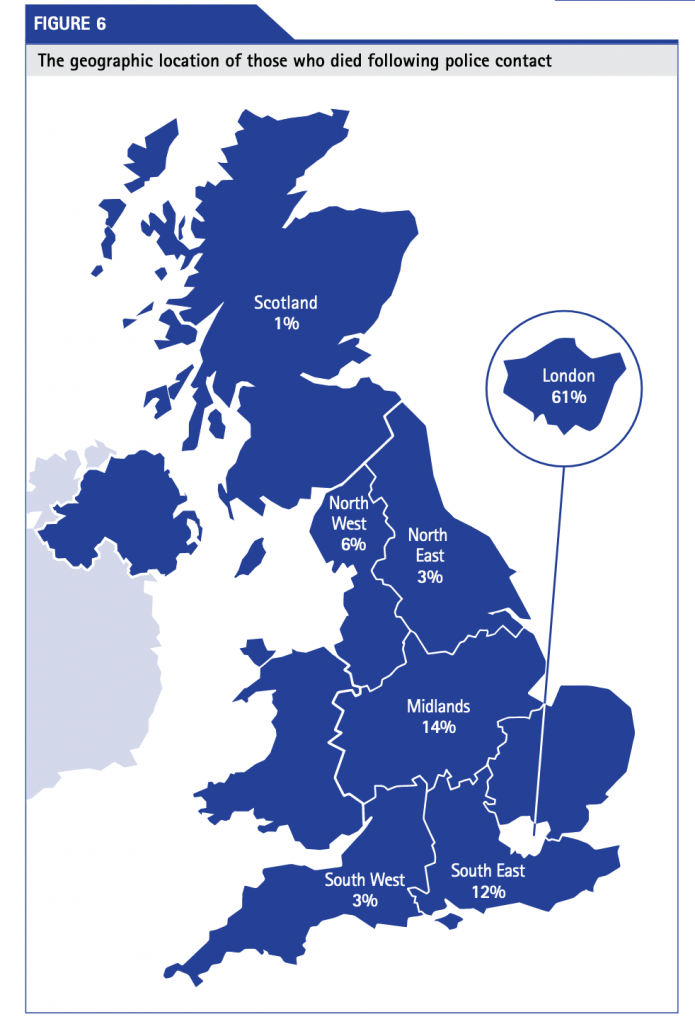
Place of death
Just over a third of those who died following police contact died whilst in a police cell or station (51 people, or 37 per cent), and slightly fewer people died on the streets (49 people, or 36 per cent). A breakdown of this is provided in Figure 7, which also shows that 17 people (12 per cent of the total) died in their homes, during police raids, after police visited them in their homes or after some other form of police contact.
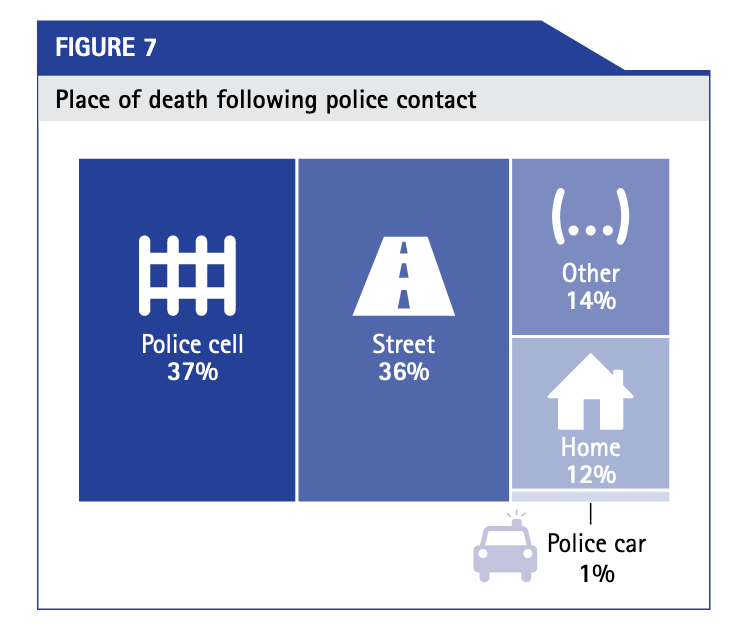
Contributory factors
Fewer than half of those who died following police contact – 61 people, or 45 per cent – were arrested before their death. Nine of the 137 (7 per cent) had been detained under the Mental Health Act. Thirty-four people died as a result of a police chase, and 6 people (4 per cent) died in incidents after being stopped and searched. The use of force by the police contributed to the deaths of 39 people. And 29 deaths were linked to the use of physical restraint. Seven people’s deaths were linked to the use of CS gas by the police and in 10 of the cases the person died after falling from a balcony, at times trying to escape from the police. (Figure 8)
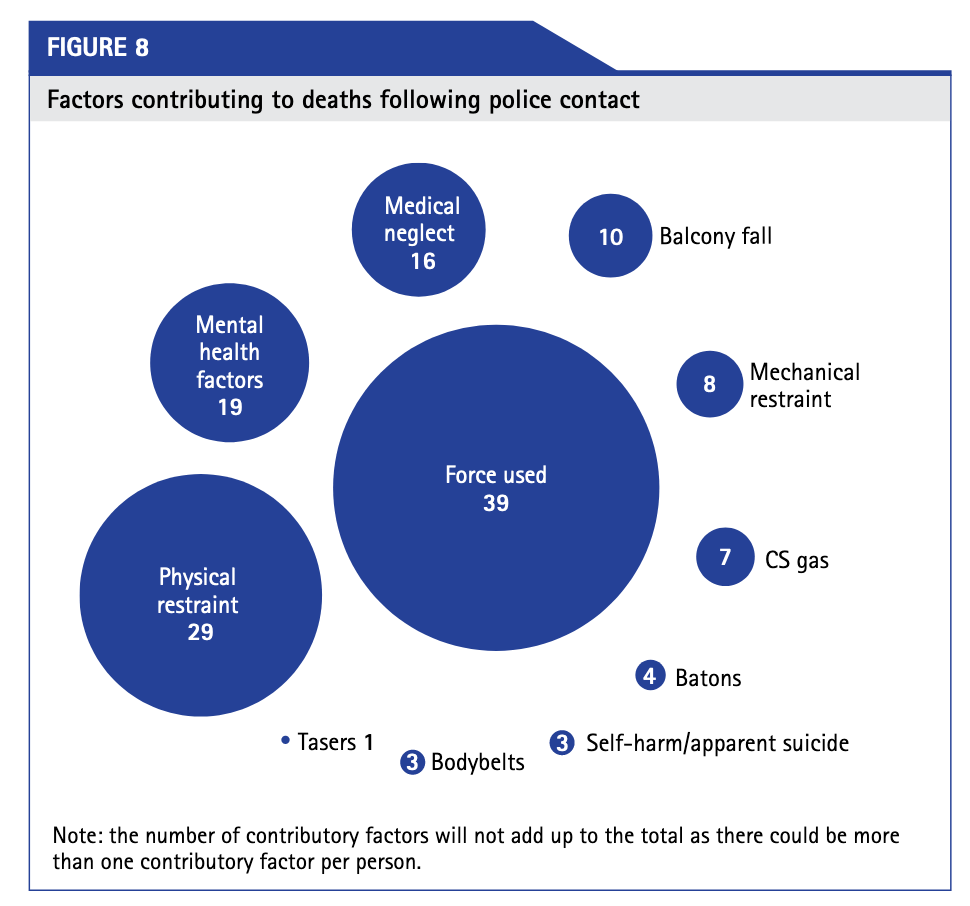
Inquest verdicts
Inquest results are not known to us in 67 (49 per cent) of the cases. In 21 cases (15 per cent of the known cases), the inquest returned a verdict of misadventure/accidental death. Four of the inquest verdicts were unlawful killing, and six were lawful killing. (Figure 9)
Prison deaths
Overview
As stated above, 348 deaths (68 per cent of the total) – took place in prison. Of these, 332 people (95 per cent) were male and 16 (5 per cent) female. The breakdown of ethnicity of those who died in prison broadly matches that of the cases as a whole. Fifty- one per cent of those who died in prison were black or black British. Thirty-three per cent were Asian or Asian British. (See Figure 10)
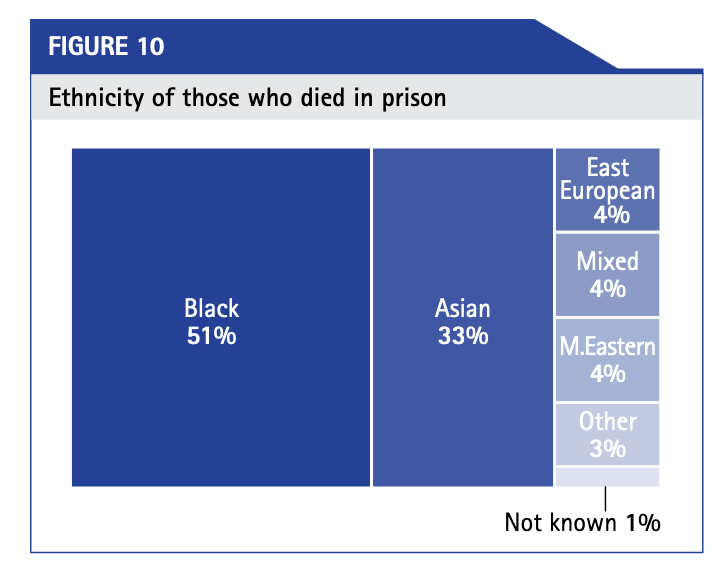
Prisoner status
Of those who died in prison, almost half (45 per cent, or 158 people) had been sentenced for a criminal offence and a further 113 people (33 per cent) were on remand, awaiting trial. (See figure 11) Twenty-three were foreign national prisoners of whom 11 were serving sentences and 12 more detained after sentence under immigration powers.
Prisoner location
The prisons where most deaths took places were HMP Wormwood Scrubs and HMP Pentonville (18 people died in both). Seventeen people died in HMP Wandsworth, 14 in HMP Brixton and 13 in HMP Belmarsh. Ten people died in HMP Leeds, 8 in both HMP Manchester and HMP Winchester and 7 in each of HMP Birmingham, Frankland, Nottingham, Norwich and Leicester.
Contributory factors
According to our records, nearly half of those who died in prison – 157 people or 45 per cent of the sub-total – took their own life or died as a result of self-harm. In particular circumstances, however, the proportion of prisoners who took their own life increased substantially. Of the 113 people who died while on remand, 83 (77 per cent) took their own life. Nine of the 11 foreign national prisoners who died (82 per cent) took their own life. (See Figure 12) Of the 348 cases involving deaths in prisons, according to our records, medical neglect was a contributory factor in 28 (8 per cent of the total). In 41 cases (12 per cent), our records indicate that mental health was a factor in the death.
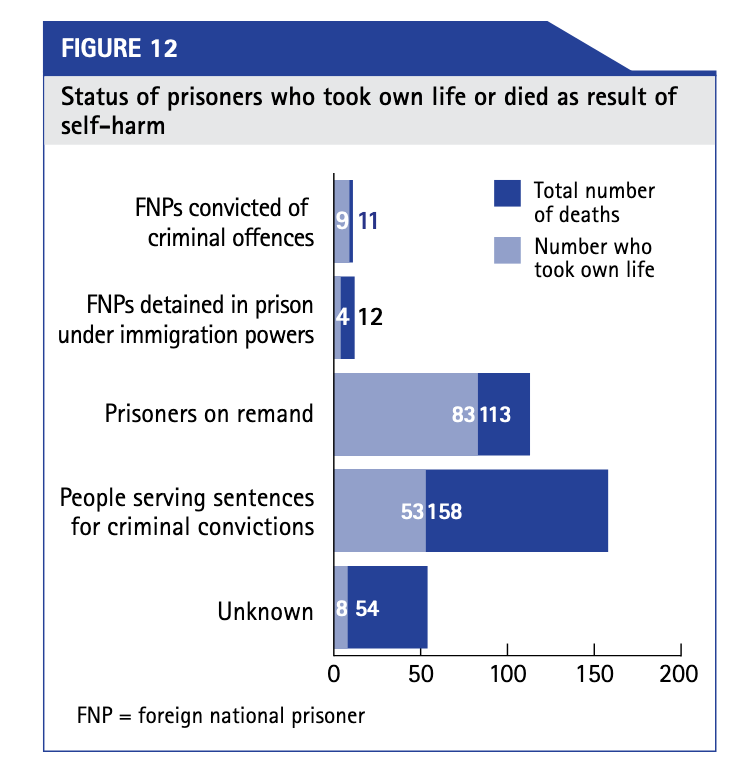
Inquest verdicts
In the majority of cases we recorded (224, or 64 per cent), the inquest verdict was not known to us. Of those known to us, inquests returned suicide verdicts in 34 cases, andmisadventure/accident verdicts in 23 cases. In 22 cases, the inquest ruled that the person had died of natural causes. (See Figure 13)
Immigration deaths
Twenty-four of the deaths took place in immigration detention, shortly following detention or during a deportation. Of the 22 deaths in detention or shortly afterwards, about one-third were in Harmondsworth immigration removal centre. (See Figure 14)
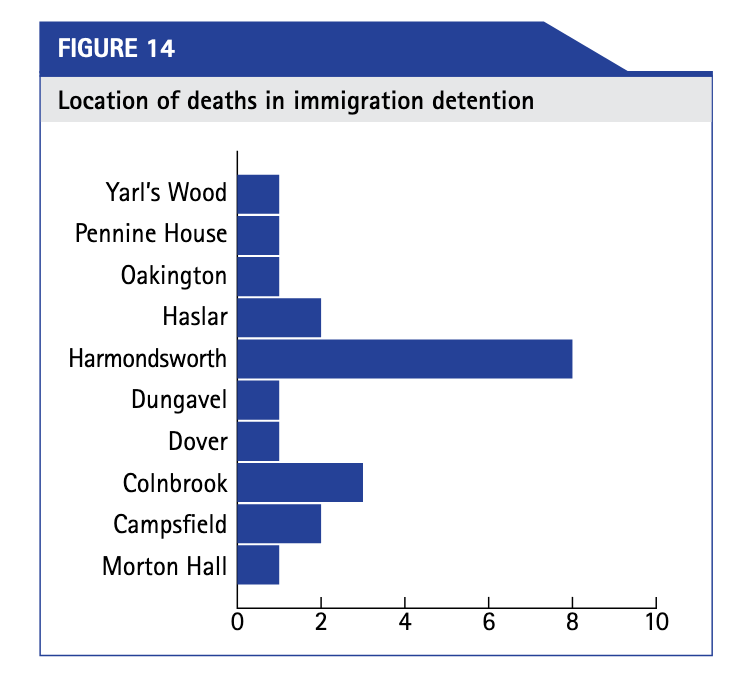
Inquest verdicts
Of the 22 deaths in detention, or shortly afterwards, we are aware of inquest verdicts in 16 cases. In 7 of these, the inquest ruled that the person took their own life. (See Figure 15) At least 9 of these 22 deaths involved a pre-existing medical condition or were related to a medical condition that occurred during detention.
Deaths by year
Deaths by year (excluding those who died during attempted removals) are shown in Figure 16.

